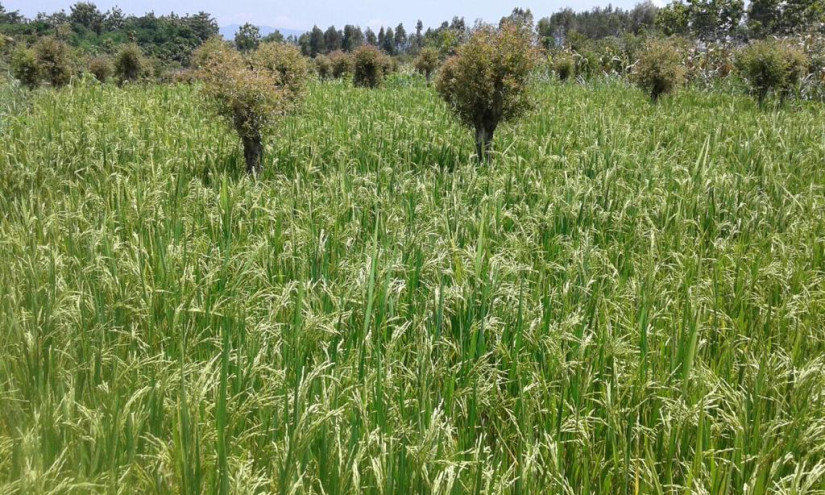
Universitas Gadjah Mada (UGM) released the G7 inbred rice variety named Gamagora 7 to the public after obtaining a decree from the Minister of Agriculture on March 28.
In the decree, Gamagora 7 rice is deemed capable of increasing rice production and is considered a superior variety with a potentially essential role in improving food security. This new variety has high production yields, is resistant to leafhoppers and diseases, and can be planted in paddy fields and rainfed areas.
Research team members Dr. Taryono and Dr. Supriyanta were grateful for the minister’s approval. Their long wait since 2006 has finally come to an end after years of research on rice that can withstand dry and paddy fields.
“We are thrilled. This indicates that our work has paid off,” said Taryono on Thursday (30/3).
He said Gamagora is short for Gama Gogo Rancah. Four people initially researched it, but the team grew to ten people during the process.
“Initially, we planted (the new variety) in the faculty garden. Then, we did multilocation tests at the UGM Center for Agrotechnology Innovation and in various places,” he said.
According to Taryono, UGM has released two rice varieties before Gamagora 7. This rice is the third variety from UGM. It came from radiation mutants of the parent rice, Rajalele, famous for its fluffiness.
This rice is also called “amphibious” rice because it can deal with the decline in rice production in Indonesia due to climate change and the impact of the conversion of paddy fields to non-rice fields, which reaches 96,512 hectares per year. It has a production potential of 9.80 tons per hectare, an average yield of approximately 7.95 tons per hectare, and a harvest age of about 119 days after sowing.
Multilocation testing was conducted in 14 locations across Indonesia, eight in paddy fields and six in rainfed fields. The Ministry of Agriculture requires this testing to grant distribution and release permits for new varieties.
As stated in the decree signed by the Director General of Food Crops, Ministry of Agriculture, Suwandi, Gamagora 7 rice has resistance to brown planthopper biotype 2 and bacterial leaf blight pathotype III, blast disease race 033, race 073, and race 133 and is suitable for paddy fields and rainfed soils.
Author: Gusti Grehenson

